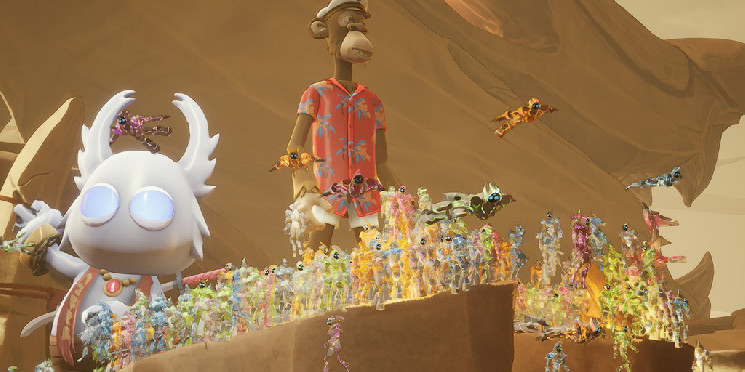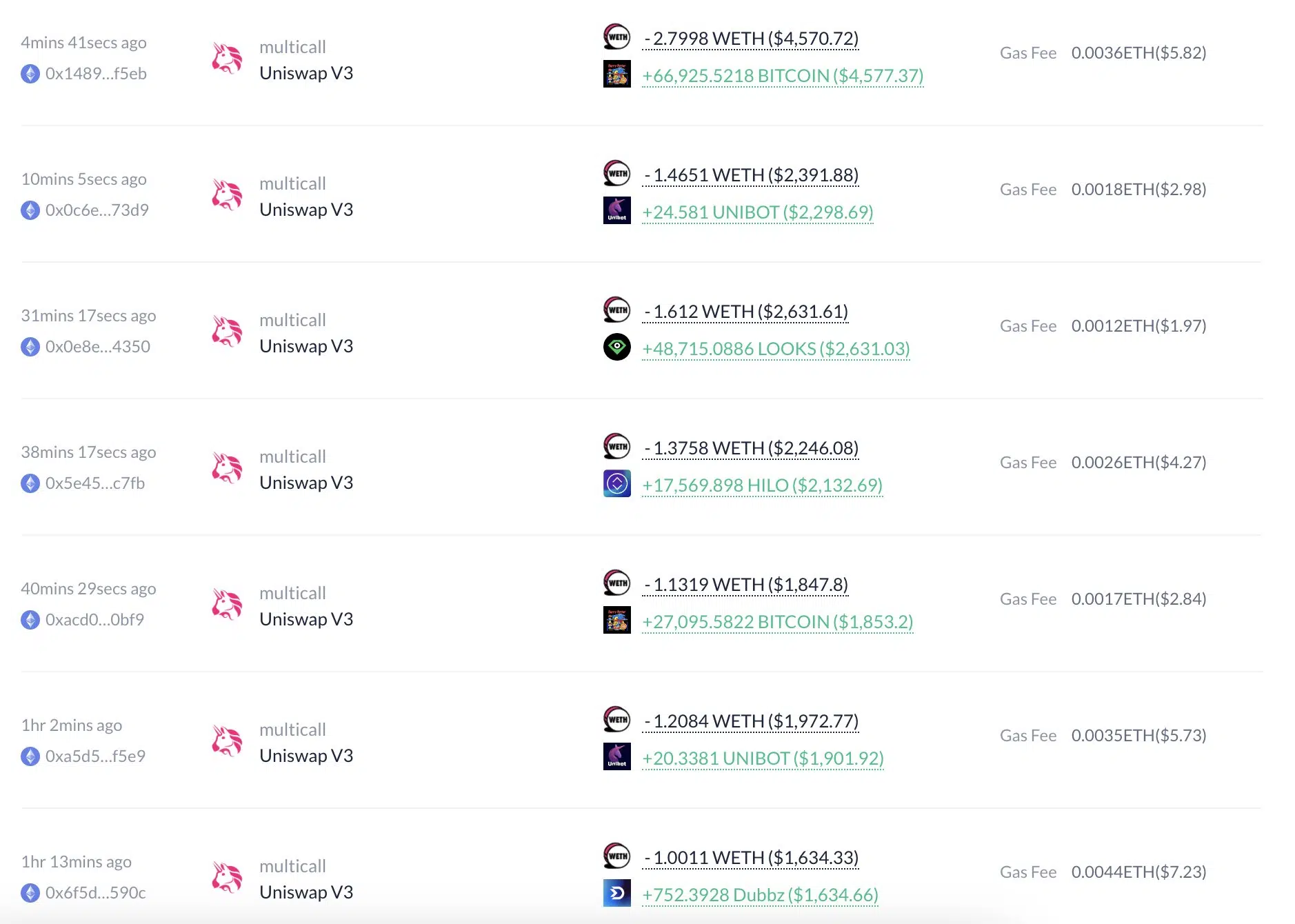NFT metaverse game worlds are often mocked for looking empty and feeling (or actually being) devoid of human life, but this was not the case with Bored Ape Yacht Club creator Yuga Labs’ Otherside Second Trip playtest in late March. Thousands of players filled the lobby, running around, leaping, and flying through the air while talking simultaneously. Although everyone had a similar robotic tribal design and the lobby was simply adorned to reduce the technical strain, the Second Trip hosted 7,200 unique players, according to Yuga Labs, and ran smoothly in a browser on a two-year-old MacBook Pro.
Yuga Labs’ Chief Creative Officer Michael Figge told Decrypt after the event that maintaining a high level of activity as Otherside continues testing and building towards a live product is essential. Yuga Labs is grappling with how to scale Otherside from last year’s massive NFT land drop and $1.25 billion worth of trading volume to date, as per CryptoSlam data, into a robust online world filled with Bored Ape-themed storytelling, social gameplay challenges, and NFT avatars roaming the land.
Building in public and letting NFT holders in on what is clearly still a work in progress is a different approach than most traditional AAA games. Some games launch in an “early access” mode, and many have a beta testing period leading up to release, but Yuga’s demo felt even earlier in the process. The technology appears to be more developed than the content at this point.
Once players completed an intro session in the Second Trip lobby, they jumped through a portal into a jungle-like environment with “magic blobs” to collect and bring to giant, laser-spewing toads, which had a vibe more in line with the Bored Ape Yacht Club universe than the sterile lobby arena. Yuga split the players into four teams led by Web3 personalities, who encouraged their followers over voice chat to collect the most orbs and feed them to the toads. Thousands of players participated, and the winning team was awarded an exclusive “winged helmet” wearable NFT.
The experience lost steam before its conclusion, feeling like a monotonous fetch quest that dragged on too long. After 20+ minutes of the same routine, some players expressed boredom or called the game “dumb” in the chat feed. “This sucks pretty bad if this is the Otherside,” one player wrote.
Figge and Yuga Chief Gaming Officer Spencer Tucker acknowledged afterward that opinions varied among players, with some enjoying the orb collection routine due to the socially competitive vibe. They emphasized that expectations can be difficult to manage when serving up a limited slice of gameplay. With these tests, Tucker explained, they are not only collecting technical feedback and data points but also gauging sentiment and reactions from players. The process is iterative, in Yuga’s view.
The Trips should become more frequent, according to Figge, who said that the first two Trips were “large-scale, theatrical experiences” and their “own beasts.” Yuga plans to “allow for a lot more visits” with a more regular schedule of tests, to “come back to the same idea, but it grows and grows and grows over time.” Figge said the goal is for Yuga Labs to move towards a model that opens up every few weeks. “That’s what you’re going to see us rotating towards,” he said.
If all goes to plan, Yuga Labs could be on track to open up the world to other builders by the end of this year, enabling the creation of user-generated content that will live on Otherdeed land plots and supplement Yuga’s own work on the world. “I think that a goal for success is that in December, we can all be asleep and somebody else is building on the Otherside—and they don’t need us,” Figge said.
The ultimate version of Otherside, as described by Tucker and Figge, is an online world where Yuga’s official content can coexist with the creations of potentially tens of thousands of players and digital land owners. Figge pointed out that smash games League of Legends and Dota 2 emerged from a fan game (Defense of the Ancients) created as a mod for Blizzard’s classic Warcraft III. In his view, Web3 allows external creators to use Yuga’s building blocks and grow value within the original game ecosystem while also benefiting those creators.
How these potentially disparate elements coexist remains to be seen. A proto-metaverse game like Roblox is entirely user-generated, with 40 million games united by a simple interface. Likewise, Decentraland provides basic infrastructure and hubs, holds events with partners, and is mostly filled by brands and independent creators.
Tucker provided an interesting anecdote, likening Yuga’s mindset to Star Wars and the Expanded Universe of content, a construct for thinking about what’s considered “canon” and what can be deemed alternate universe takes, “what if” stories, and so on. “That’s kind of up to us to arbitrate,” Tucker admitted.
That sort of thing is already happening in the Web3 world, and especially around the Bored Ape Yacht Club. Tucker said that “what we might describe as layer-2s to our layer-1” describes derivative creations (layer-2 content) by NFT holders built on top of the layer-1 brand and artwork developed and owned by Yuga Labs.
The other burning question about Otherside is how—or even whether—it will ultimately become a game that is available to a mass audience. With Bored Ape NFT prices sitting around $92,000 worth of ETH on the low end right now and Otherside NFT deeds nearing $2,500, a fully exclusive experience would leave out most gamers.
For now, Yuga Labs is focused on NFT holders who have invested in its Web3 vision, preferring to give them the ability to bring along friends or loan out their access credentials to bring in more users. By doing so, they believe they can unlock “sticky” behaviors that will scale.


